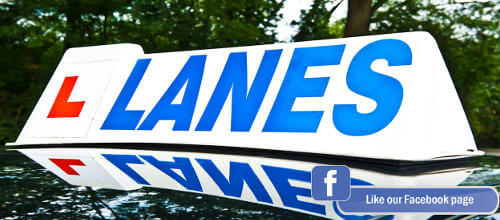
Do you know the national speed limit?
Drivers are often complaining about speed limits, but knowing what they are and not exceeding them is a vital part of being a responsible driver. The confusing thing is that there are different speed limits depending on the type of your vehicle and the type of road you’re driving on.
If you don’t know the correct speed limit for a particular situation, you could put yourself and others at risk. You could be fined on the spot and given penalty points, or in extreme cases, have to go to court and face potential disqualification from driving.
Current speed limits by road and vehicle type
Cars, motorcycles, car-derived vans and dual-purpose vehicles:
- Built up areas: 30mph
- Single carriageways: 60mph
- Dual carriageways: 70mph
- Motorways: 70mph
Cars, motorcycles, car-derived vans and dual-purpose vehicles when towing caravans or trailers:
- Built up areas: 30mph
- Single carriageways: 50mph
- Dual carriageways: 60mph
- Motorways: 60mph
Motorhomes or motor caravans (not more than 3.05 tonnes maximum unladen weight):
- Built up areas: 30mph
- Single carriageways: 60mph
- Dual carriageways: 70mph
- Motorways: 70mph
Motorhomes or motor caravans (more than 3.05 tonnes maximum unladen weight):
- Built up areas: 30mph
- Single carriageways: 50mph
- Dual carriageways: 60mph
- Motorways: 70mph
Buses, coaches and minibuses (not more than 12 metres overall length):
- Built up areas: 30mph
- Single carriageways: 50mph
- Dual carriageways: 60mph
- Motorways: 70mph
Buses, coaches and minibuses (more than 12 metres overall length):
- Built up areas: 30mph
- Single carriageways: 50mph
- Dual carriageways: 60mph
- Motorways: 60mph
Goods vehicles (not more than 7.5 tonnes maximum laden weight):
- Built up areas: 30mph
- Single carriageways: 50mph
- Dual carriageways: 60mph
- Motorways: 70mph
Goods vehicles (more than 7.5 tonnes maximum laden weight) in England and Wales:
- Built up areas: 30mph
- Single carriageways: 50mph
- Dual carriageways: 60mph
- Motorways: 60mph
Goods vehicles (more than 7.5 tonnes maximum laden weight) in Scotland:
- Built up areas: 30mph
- Single carriageways: 40mph
- Dual carriageways: 50mph
- Motorways: 60mph
Variable speed limits
Variable speed limits are increasingly common on ‘smart motorways’ across the UK. They are used to improve traffic flow by reducing congestion. Look out for the variable speed limit displayed on gantries above the motorways.
Fixed speed limits
Fixed speed limits set by local authorities remain the most common type of speed limit. You can see them signposted with a number designating the speed limit inside a red circle when entering a speed limited zone. Depending on the zone the speed limit could be fixed at 20, 30, 40 or 50mph.
Outside these zones, the majority of UK roads are designated as ‘national speed limit’, which is indicated by a white, circular sign with a single black diagonal stripe running across it.
Fixed speed limits are typically enforced with Gatso speed cameras, and sometimes temporary camera vans parked at speeding hotspots.
Minimum speed limits
On rare occasions, minimum speed limits are imposed. They are marked with a round blue sign with a number designating the minimum speed. These are used in places like tunnels, where stationary or slow-moving traffic might cause a traffic risk or pollution hazard.
Speed limiters
Certain classes of vehicles are required by law to have a speed limiter which limits the maximum speed of a vehicle by restricting the fuel supply to the engine. These classes are:
- Vehicles with more than 8 passenger seats, eg buses, minibuses, coaches, stretch limousines.
- Goods vehicles with a maximum laden weight of more than 3.5 tonnes.
Learning to drive for the first time or looking to brush up your driving skills? At Lanes School of Driving we’ve been keeping drivers safe on the road for over 100 years. Call us on 020 8166 5678 with any questions or to book in your next lesson.

